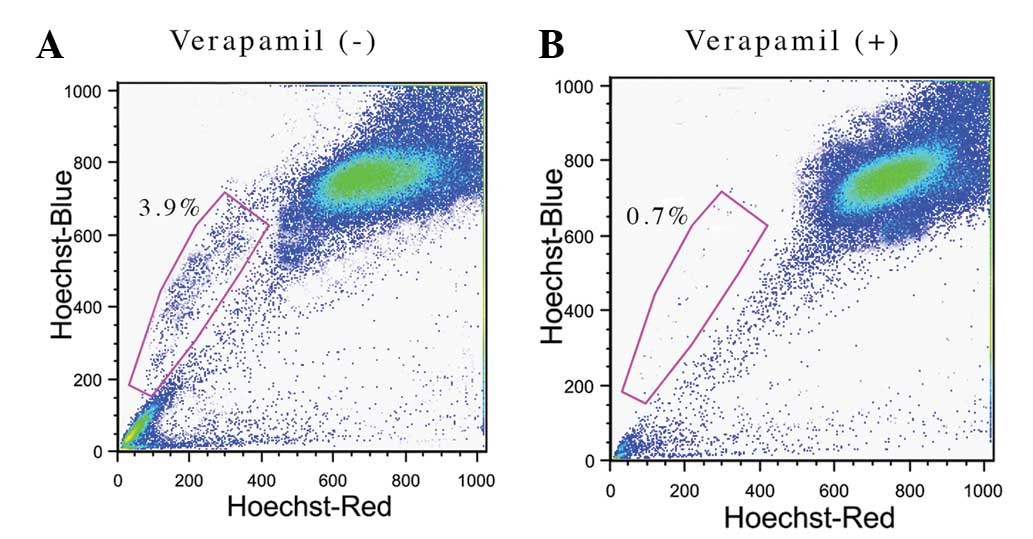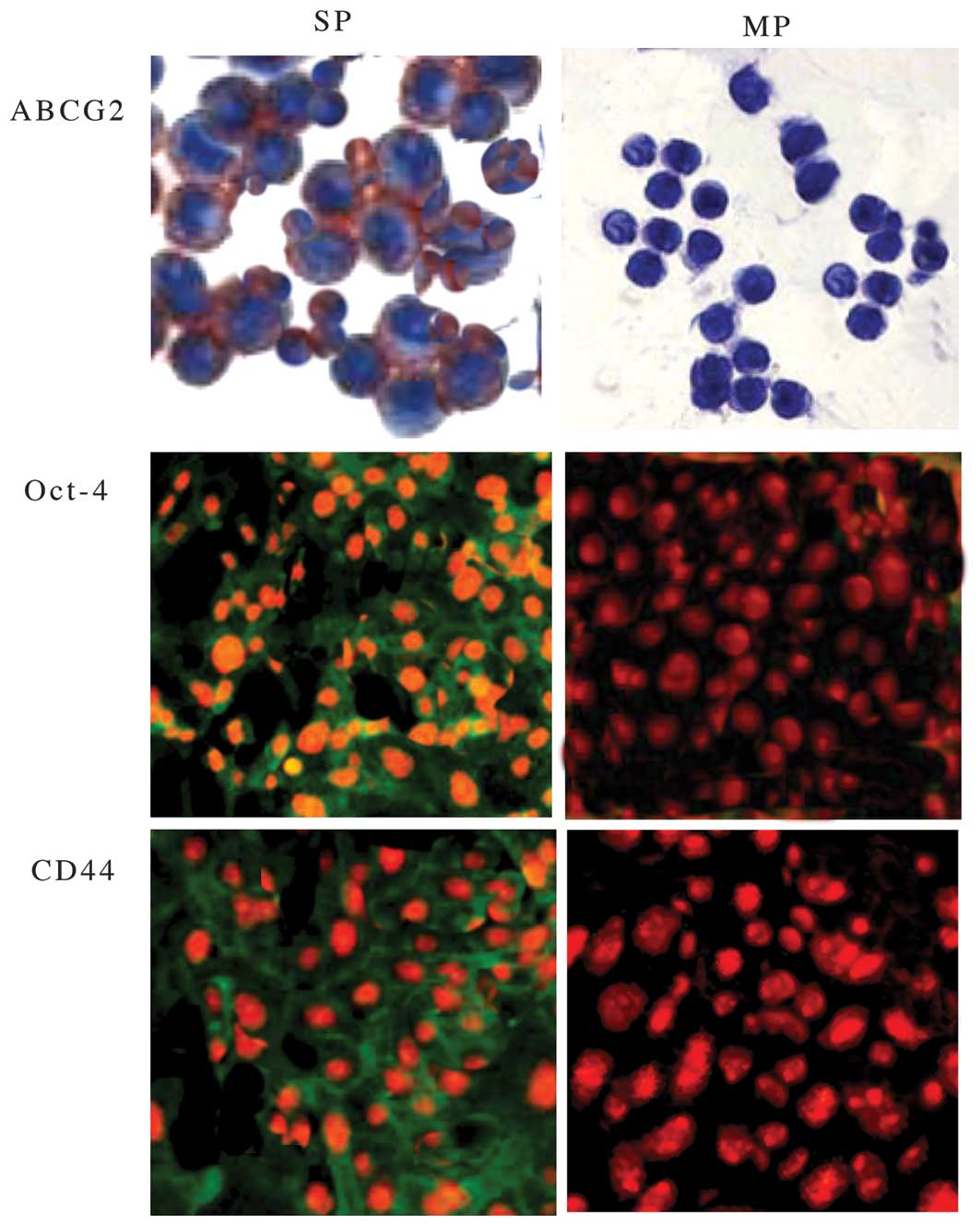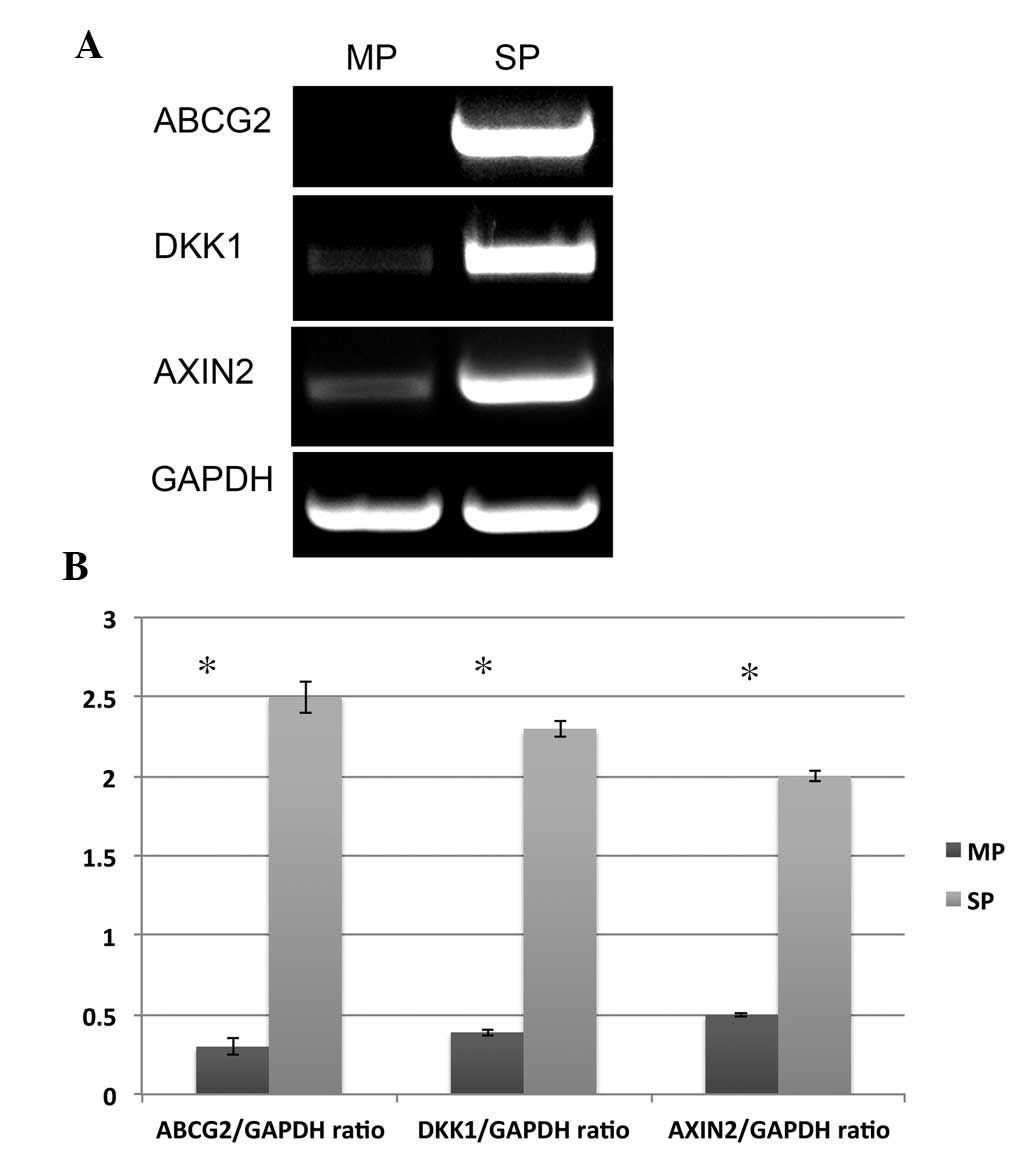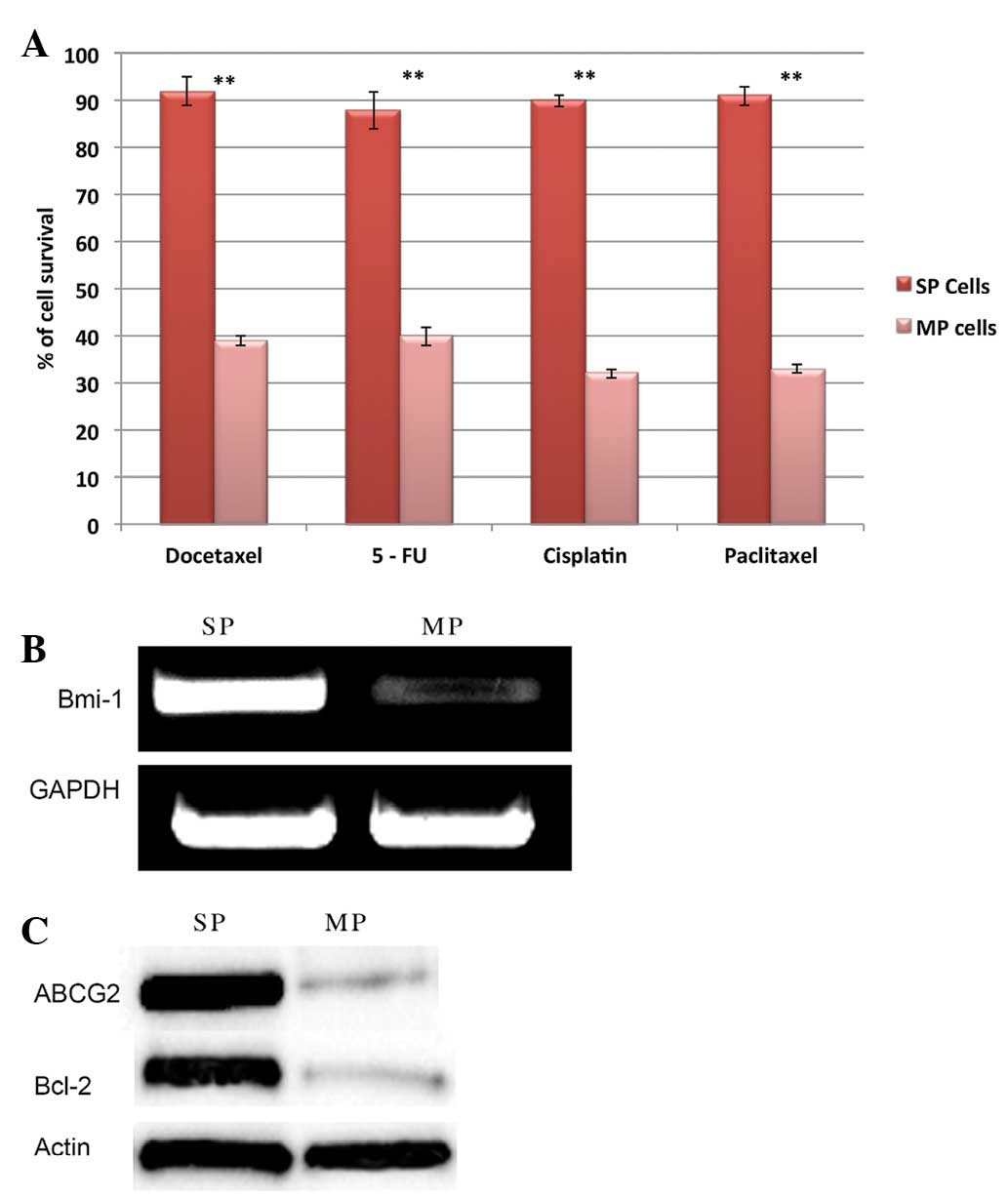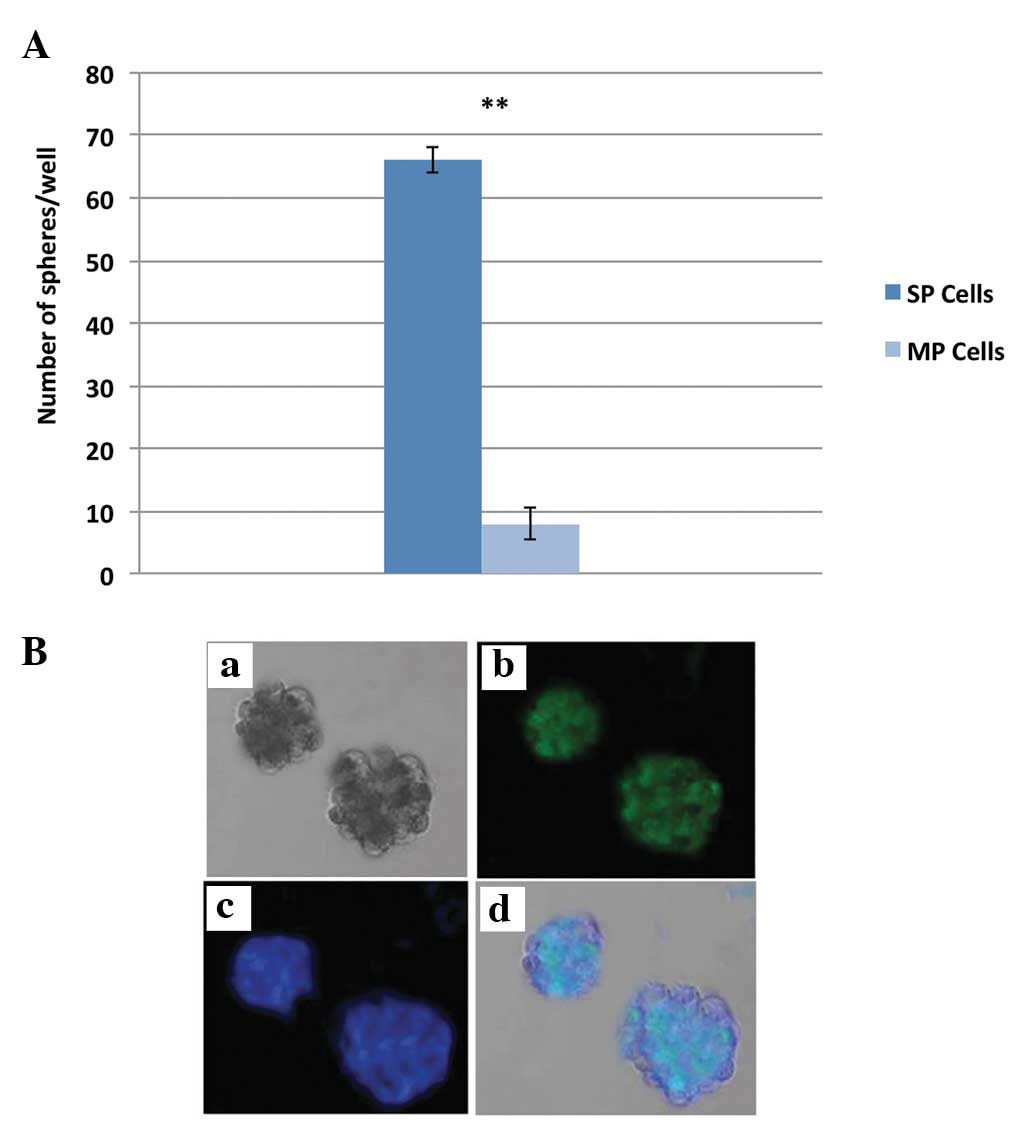|
1
|
Kam MK, Wong FC, Kwong DL, Sze HC and Lee
AW: Current controversies in radiotherapy for nasopharyngeal
carcinoma (NPC). Oral Oncol. 50:907–912. 2014. View Article : Google Scholar
|
|
2
|
Su J, Xu XH, Huang Q, Lu MQ, et al:
Identification of cancer stem-like CDZ cells in human
nasopharyngeal carcinoma cell line. Arch Med Res. 42:15–21. 2011.
View Article : Google Scholar : PubMed/NCBI
|
|
3
|
Goodell MA, Brose K, Paradis G, Conner AS
and Mulligan RC: Isolation and functional properties of murine
hematopoietic stem cells that are replicating in vivo. J Exp Med.
183:1797–1806. 1996. View Article : Google Scholar : PubMed/NCBI
|
|
4
|
Salcido CD, Larochelle A, Taylor BJ,
Dunbar CE and Varticovski L: Molecular characterisation of side
population cells with cancer stem cell-like characteristics in
small-cell lung cancer. Br J Cancer. 102:1636–1644. 2010.
View Article : Google Scholar : PubMed/NCBI
|
|
5
|
Yin B, Yang Y, Zhao Z, Zeng Y, Mooney SM,
et al: Arachidonate 12-lipoxygenase may serve as a potential marker
and therapeutic target for prostate cancer stem cells. Int J Oncol.
38:1041–1046. 2011. View Article : Google Scholar : PubMed/NCBI
|
|
6
|
Tabuse M, Ohta S, Ohashi Y, Fukaya R, et
al: Functional analysis of HOXD9 in human gliomas and glioma cancer
stem cells. Mol Cancer. 10:602011. View Article : Google Scholar : PubMed/NCBI
|
|
7
|
Feuring-Buske M and Hogge DE: Hoechst
33342 efflux identifies a subpopulation of cytogenetically normal
CD34(+) CD38(-) progenitor cells from patients with acute myeloid
leukemia. Blood. 97:3882–3889. 2001. View Article : Google Scholar : PubMed/NCBI
|
|
8
|
Hirschmann-Jax C, Foster AE, Wulf GG,
Nuchtern JG, et al: A distinct 'side population' of cells with high
drug efflux capacity in human tumor cells. Proc Natl Acad Sci USA.
101:14228–14233. 2004. View Article : Google Scholar
|
|
9
|
Mitsutake N, Iwao A, Nagai K, Namba H, et
al: Characterization of side population in thyroid cancer cell
lines: cancer stem-like cells are enriched partly but not
exclusively. Endocrinology. 148:1797–1803. 2007. View Article : Google Scholar : PubMed/NCBI
|
|
10
|
Haraguchi N, Utsunomiya T, Inoue H, Tanaka
F, Mimori K, Barnard GF and Mori M: Characterization of a side
population of cancer cells from human gastrointestinal system. Stem
Cells. 24:506–513. 2006. View Article : Google Scholar
|
|
11
|
Ho MM, Ng AV, Lam S and Hung JY: Side
population in human lung cancer cell lines and tumors is enriched
with stem-like cancer cells. Cancer Res. 67:4827–4833. 2007.
View Article : Google Scholar : PubMed/NCBI
|
|
12
|
Bourguignon LY, Peyrollier K, Xia W and
Gilad E: Hyaluronan-CD44 interaction activates stem cell marker
Nanog, Stat-3-mediated MDR1 gene expression and ankyrin-regulated
multidrug efflux in breast and ovarian tumor cells. J Biol Chem.
283:17635–17651. 2008. View Article : Google Scholar : PubMed/NCBI
|
|
13
|
Gao AC, Lou W, Sleeman JP and Isaacs JT:
Metastasis suppression by the standard CD44 isoform does not
require the binding of prostate cancer cells to hyaluronate. Cancer
Res. 58:2350–2352. 1998.PubMed/NCBI
|
|
14
|
Wang J, Guo LP, Chen LZ, Zeng YX and Lu
SH: Identification of cancer stem cell-like side population cells
in human nasopharyngeal carcinoma cell line. Cancer Res.
67:3716–3724. 2007. View Article : Google Scholar : PubMed/NCBI
|
|
15
|
Reya T and Clevers H: Wnt signaling in
stem cells and cancer. Nature. 434:843–850. 2005. View Article : Google Scholar : PubMed/NCBI
|
|
16
|
Zhang H, Liu W, Feng X, Wang L, Jiang X,
et al: Identification of ABCG2+ cells in nasopharyngeal carcinoma
cells. Oncol Rep. 27:1177–1187. 2012.PubMed/NCBI
|
|
17
|
Ma L, Lai D, Liu T, et al: Cancer
stem-like cells can be isolated with drug selection in human
ovarian cancer cell line SKOV3. Acta Biochim Biophys Sin.
42:593–602. 2010. View Article : Google Scholar : PubMed/NCBI
|
|
18
|
He QZ, Luo XZ, Wang K, et al: Isolation
and characterization of cancer stem cells from high-grade serous
ovarian carcinomas. Cell Physiol Biochem. 33:173–184. 2014.
View Article : Google Scholar : PubMed/NCBI
|
|
19
|
Lowry OH, Rosebrough NJ, Farr AL and
Randall RJ: Protein measurement with the Folin phenol reagent. J
Biol Chem. 193:265–275. 1951.PubMed/NCBI
|
|
20
|
Yanamoto S, Kawasaki G, Yamada S,
Yoshitomi I, Kawano T, et al: Isolation and characterization of
cancer stem-like side population cells in human oral cancer cells.
Oral Oncol. 47:855–860. 2011. View Article : Google Scholar : PubMed/NCBI
|
|
21
|
Song J, Chang I, Chen Z, Kang M and Wang
CY: Characterization of side populations in HNSCC, highly invasive,
chemoresistant and abnormal wnt signaling. PLoS One. 5:e114562010.
View Article : Google Scholar
|
|
22
|
Gil J, Stembalska A, Pesz KA and Sasiadek
MM: Cancer stem cells: the theory and perspectives in cancer
therapy. J Appl Genet. 49:193–199. 2008. View Article : Google Scholar : PubMed/NCBI
|
|
23
|
Komuro H, Saihara R, Shinya M, Takita J,
et al: Identification of side population cells (stem-like cell
population) in pediatric solid tumor cell lines. J Pediatr Surg.
42:2040–45. 2007. View Article : Google Scholar : PubMed/NCBI
|
|
24
|
Campbell PA, Perez-Iratxeta C,
Andrade-Navarro MA and Rudnicki MA: Oct4 targets regulatory nodes
to modulate stem cell function. PLoS One. 2:e5532007. View Article : Google Scholar : PubMed/NCBI
|
|
25
|
Hu T, Liu S, Breiter DR, Wang F, Tang Y
and Sun S: Octamer 4 small interfering RNA results in cancer stem
cell-like cell apoptosis. Cancer Res. 68:6533–6540. 2008.
View Article : Google Scholar : PubMed/NCBI
|
|
26
|
Ponta H, Sherman L and Herrlich PA: CD44:
From adhesion molecules to signalling regulators. Nat Rew Mol Cell
Bio. 4:33–45. 2003. View
Article : Google Scholar
|
|
27
|
Honeth G, Bendahl PO, Ringnér M, Saal LH,
Gruvberger-Saal SK, et al: The CD44+/CD24−
phenotype is enriched in basal-like breast tumors. Breast Cancer
Res. 10:R532008. View
Article : Google Scholar
|
|
28
|
Dancescu M, Rubio-Trujillo M, Biron G,
Bron D, Delespesse G and Sarfati M: Interleukin 4 protects chronic
lymphocytic leukemic B cells from death by apoptosis and
upregulates Bcl-2 expression. J Exp Med. 176:1319–1326. 1992.
View Article : Google Scholar : PubMed/NCBI
|
|
29
|
Kieslinger M, Woldman I, Moriggl R, et al:
Antiapoptotic activity of Stat5 required during terminal stages of
myeloid differentiation. Genes Dev. 14:232–244. 2000.PubMed/NCBI
|
|
30
|
Prokopchuk O, Liu Y, Henne-Bruns D and
Kornmann M: Interleukin-4 enhances proliferation of human
pancreatic cancer cells: Evidence for autocrine and paracrine
actions. Br J Cancer. 92:921–928. 2005. View Article : Google Scholar : PubMed/NCBI
|
|
31
|
Li J and Wang CY: TBL1-TBLR1 and
beta-catenin recruit each other to Wnt target-gene promoter for
transcription activation and oncogenesis. Nat Cell Biol.
10:160–169. 2008. View
Article : Google Scholar : PubMed/NCBI
|
|
32
|
Yang F, Zeng Q, Yu G, Li S and Wang CY:
Wnt/beta-catenin signaling inhibits death receptor-mediated
apoptosis and promotes invasive growth of HNSCC. Cell Signal.
18:679–687. 2006. View Article : Google Scholar
|
|
33
|
Chen S, Guttridge DC, You Z, Zhang Z,
Fribley A, et al: Wnt-1 signaling inhibits apoptosis by activating
b-catenin/Tcf-mediated transcription. J Cell Biol. 152:87–96. 2011.
View Article : Google Scholar
|



